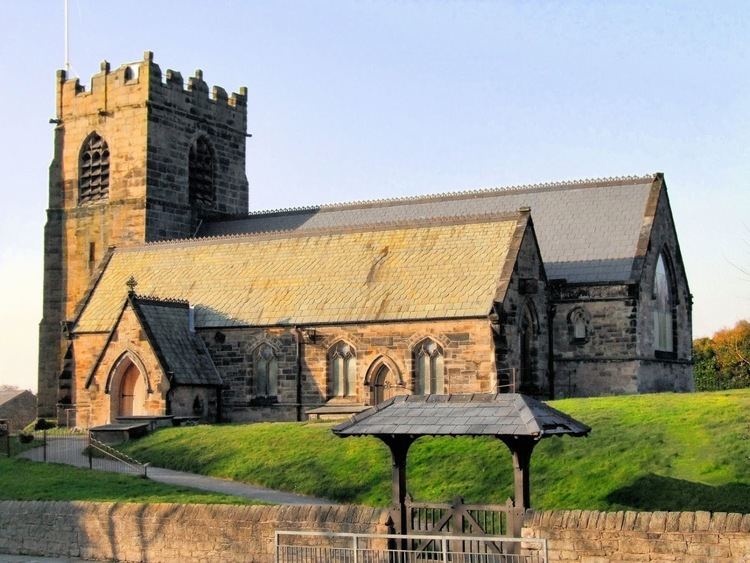
We are a friendly community church located in the heart of the parish of Bidston in the Wirral. We really believe that at St. Oswald’s there is something for everyone. You will always be greeted with a warm smile and a cup of tea or coffee! If you are thinking of visiting us, please do not hesitate to contact our vicar, Joe, who would be more than happy to chat with you.
St. Oswald’s is found on Bidston Village Road, CH43 7QT
Accessibility is important to us in order to include everyone: we have a ramp into the church and easily removable chairs in the sanctuary. We also maintain a hearing (induction) loop, large print orders of service, and wheelchair-accessible toilet facilities.
St. Oswald’s Church serves Bidston Village & Beechwood Village — formerly the Ford estate. Bidston Village has appeared in records since Doomsday, but evidence for occupation goes back to the Stone Age. The Village still maintains its medieval shape of church, farms, village green and manor house.
The Village has a rich heritage, and has been involved in several key points of British history. At one time, the village was owned by the Stanley family, who became Earls of Derby. The 6th Earl of Derby has been closely associated with William Shakespeare and is credited with bringing Shakespeare to Bidston as a member of a band of actors.
As Royalists, the Stanley family forfeited their lands during the Commonwealth, but on the Restoration of the monarchy the village came into the possession of the Vyner family. It is because of the Vyner family that the village has remained in the style of a Medieval village, and in the late 20th century was designated as a Conservation Area.


Today Bidston Village status as a conservation area has meant that the village remains a genuinely beautiful place for visitors. A walk around the village takes approximately an hour, and you can see the buildings which chart the village’s history.
Start the walk from St. Oswald’s Church Bidston, the site of the original church in the 12th century, and take in the tower which dates from 1520. From the church, travel through the village and see the variety of farm houses (all from different eras), through to Bidston Hall which was built in the 1580s, and is where Shakespeare is believed to have visited.
Within the Bidston area is Flaybrick Memorial Gardens, Wirral’s finest Victorian cemetery. Set in 26 acres of landscaped gardens, it contains a great variety of memorial architecture. Tam O’Shanter’s Urban Farm is a working farm, designed as a family attraction. It is based at Tam O’Shanter’s cottage which is around 300 years old. Bidston Hill is also an area of great beauty and is well worth a visit in its own right.


Beechwood is a housing estate situated between Bidston and Noctorum, to the west of Birkenhead on the Wirral Peninsula in England. The estate was built in the 1960s as the Ford Estate and completed in the mid to late 1970s, to house people moving from the North End of Birkenhead and providing a better standard of living.
The estate is now separated into three sections, these being Upper Bidston Village, Beechwood and Greenfields. In recent years the estate has seen significant redevelopment of the former wooded area at 6th Avenue with the construction of new affordable homes by private investors.
There has been a lighthouse on Bidston Hill since about 1771, when the first Bidston Lighthouse was built, further from the shore than any other lighthouse in Britain. The tower was octagonal, and the lamp room featured a massive parabolic reflector, 13’6? in diameter, developed at the Bidston Signals Station by William Hutchinson, Liverpool Harbour Master and one-time privateer.
The present Bidston Lighthouse and Cottages were built by Mersey Docks and Harbour Board in 1873, after the original lighthouse was damaged by fire and demolished. The building is Grade-II listed, privately owned and frequently opened to the public.


The windmill on Bidston Hill may have been there as early as 1596. It was a “peg mill”, which was destroyed in 1791 during a gale which caused the sails to break loose and revolve at such a speed that the friction caused the machinery to ignite!
It was succeeded by this brick-built tower mill and was used to grind corn to flour for 75 years. It was ideally placed to catch the wind and could produce 122 lb (50.84 kg ) of flour every 3 to 5 minutes (depending on the wind speed). The windmill had one important safety feature: an extra door! This prevented millers walking out of the mill into the rapidly turning sails (60 miles an hour on a good day).

During the 1890s, went into the hands of the Bidston Hill Committee for public use. The Metropolitan Borough of Wirral carried out more remedial work over the years until 2004, when it was closed to public. The roof was repaired in February 2006. The windmill is now an educational resource and from 2014, was open to the public on the first Saturday of every month between April and September from 10 am to 12.

Headline image taken by Rodhullandemu. Map accessed through and © by Google. Images of Wirral by Kenneth Burnley & Guy Huntington The Silver Birch Press. Image of St. Oswald’s taken from Facebook and their policies ensue. Flaybrick Cemetary image taken by Colin Gould as seen on Flickr. Bidston Village Church Roof View photo taken by Kenneth Burnley as seen on wirralhistory.uk. Bidston Lighthouse photograph by Roger Haworth. Bidston Lighthouse photograph Bidston Lighthouse, January 2015. Photograph by Raymond McBride. Bidston Windmill by Joseph Owen, oil on canvas. From the collection of Dick Bradshaw. Bidston Windmill photograph by Panaramio.
St. Oswald’s Church
Bidston Village Road,
Prenton, Merseyside
CH43 7QT
0151 201 0377
Contact Us